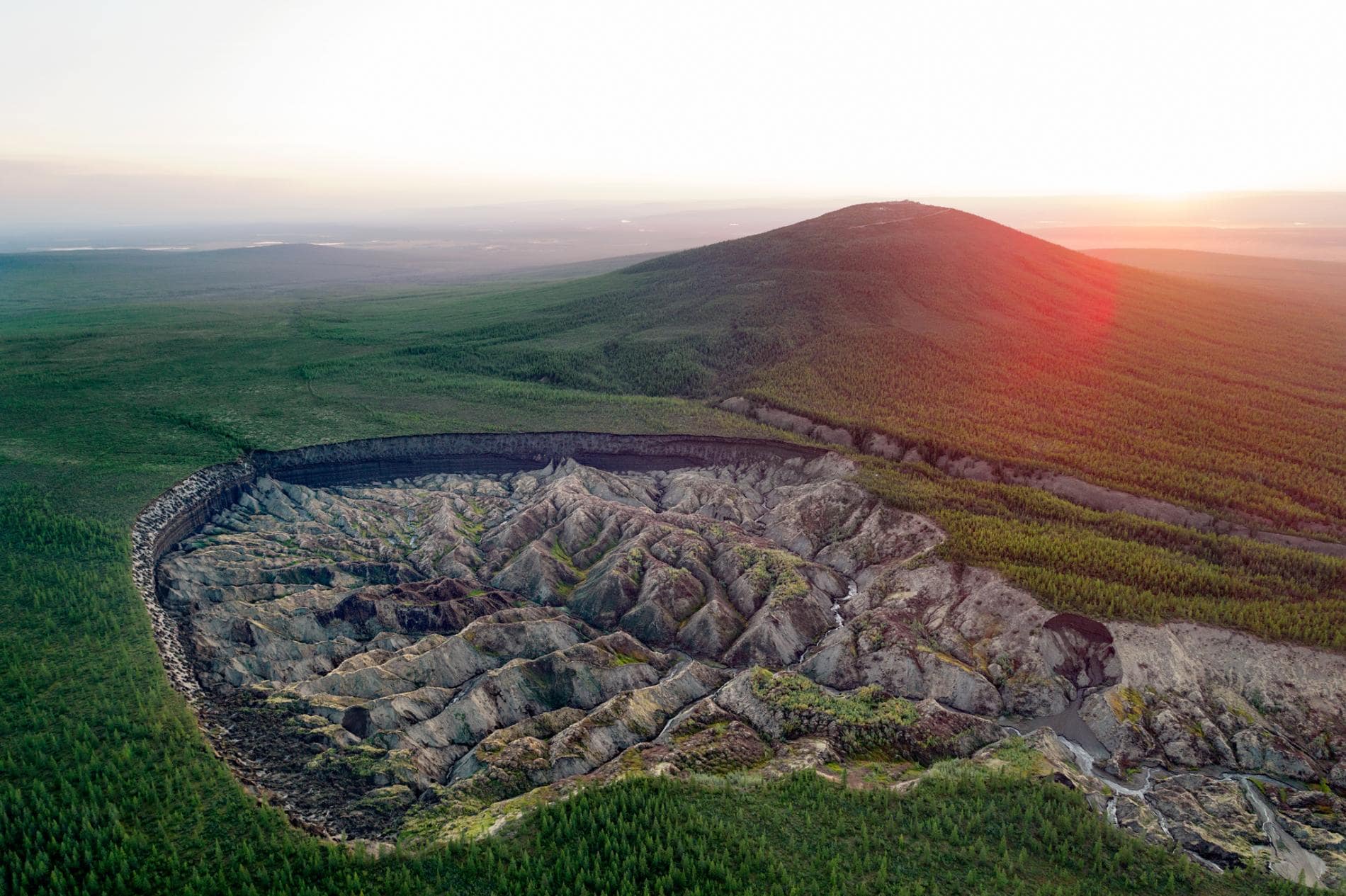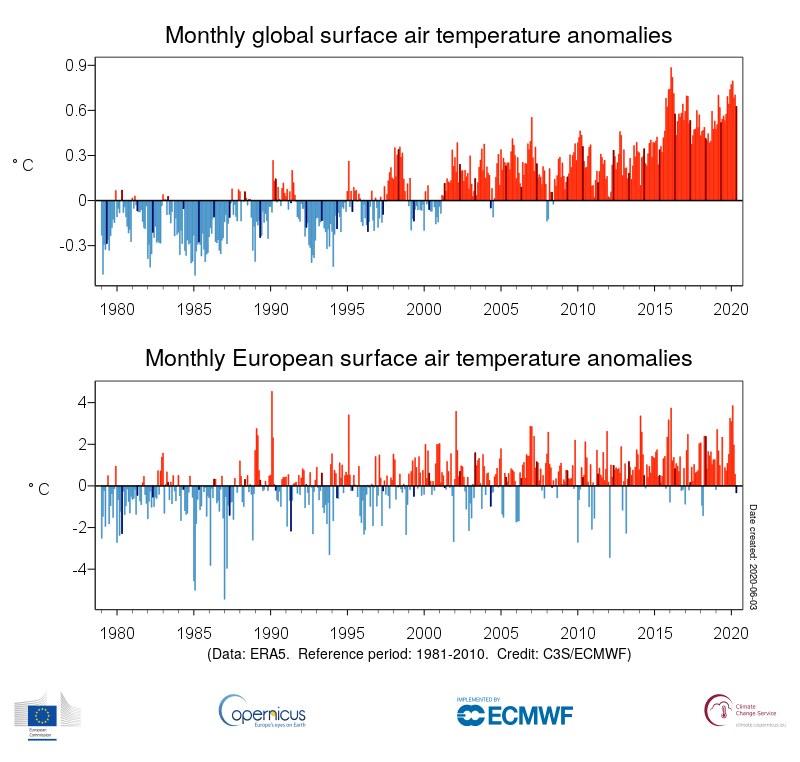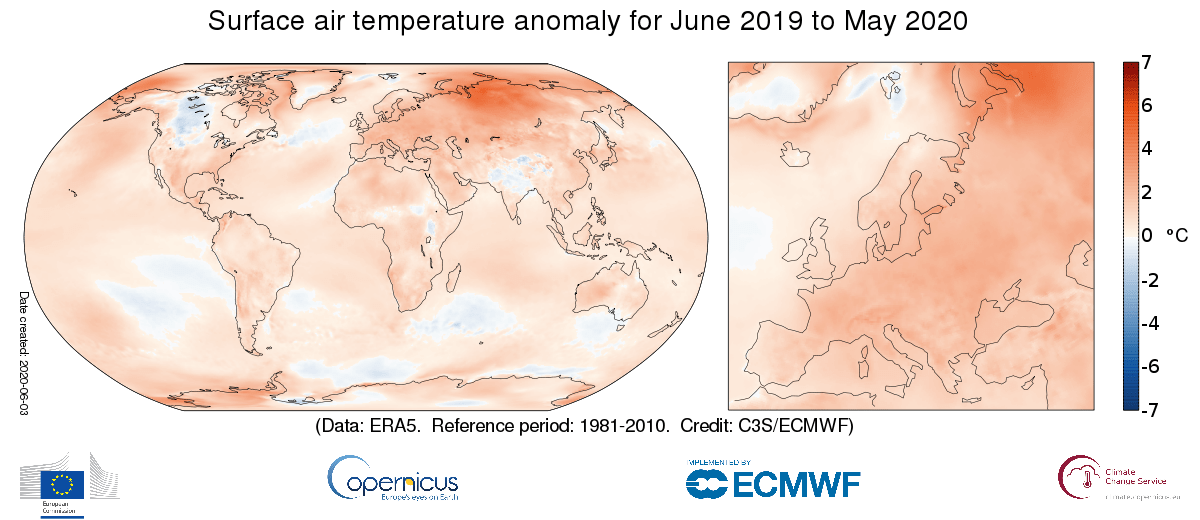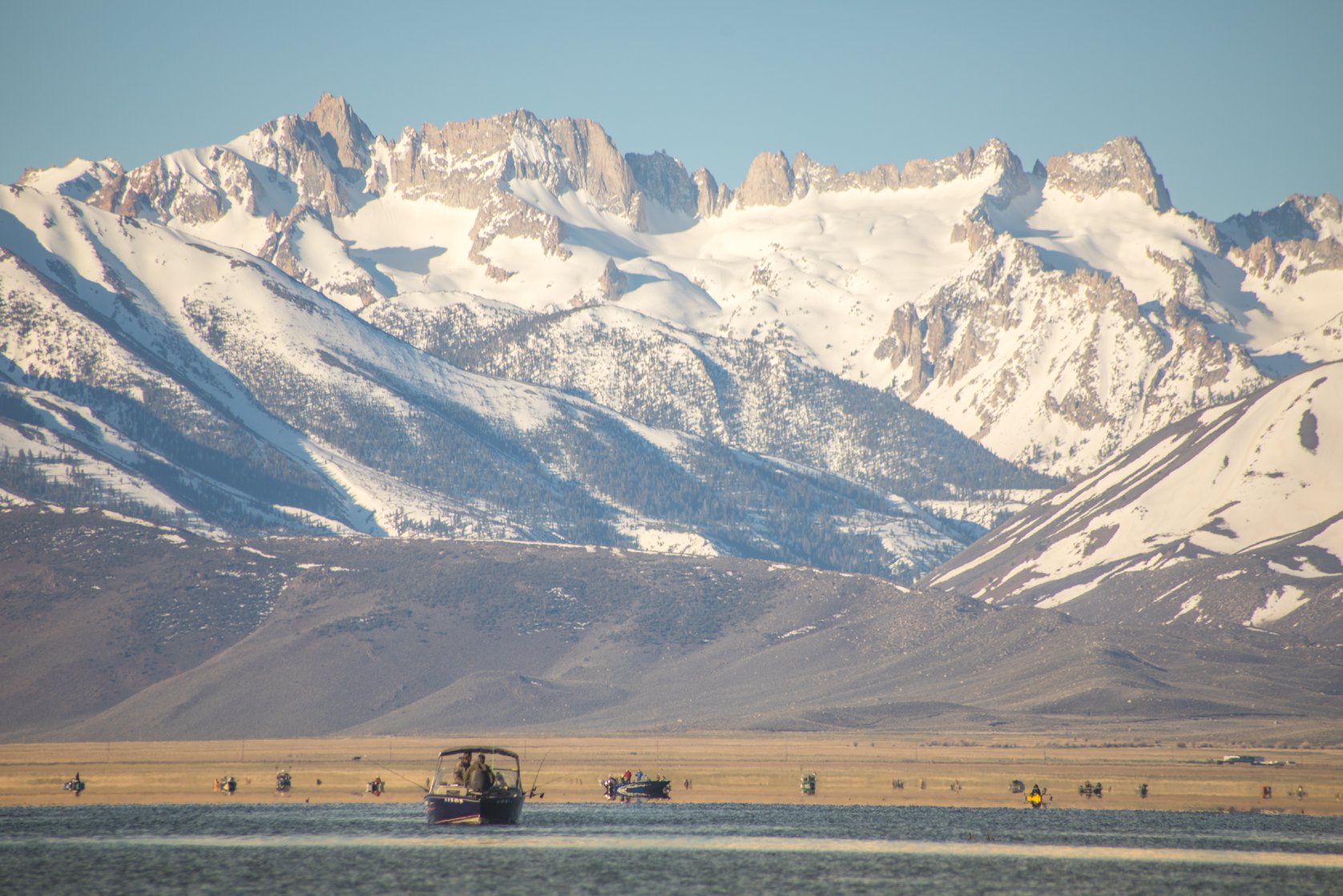
May 2020 was the hottest May in recorded history. Global temperatures were 1.13℉ hotter than average, with Siberia experiencing temperatures 18℉ higher than normal. 2020 could be even hotter than 2016 which was the hottest year on record.
The first five months of 2020 were the second warmest January-May period since 1979. Additionally, this past 12 month period, from June 2019 to May 2020, was on average 1.3℉ warmer than the historical average temperature. This 12 month average of a 1.3℉ increase in temperature tied the previous record, set from October 2015 to September 2016.

2016 was the warmest year ever recorded due to a combination of an El Niño event and human-caused emissions. 2016 was 2.3℉ above pre-industrial averages, and experts expect 2020 to bring even higher global average temperatures, becoming the hottest year in recorded history. Even with a potential La Niña event that could cause cooler ocean surface temperatures, 2020 will be one of the top three hottest years on record.
May 2020 has already broken the record for the warmest May in recorded history. While Siberia, Alaska, much of the Andes and Antarctica experienced significantly warmer than average temperatures in May 2020, it was also warmer than average in other areas. North America, South America, Central Africa, and south-eastern Asia also experienced an unusually warm May. Eastern and central Canada, parts of Asia, and Australia experienced lower than average temperatures. Notably, Australia had its first month since October 2016 with an average temperature below its historical average.

Despite cooler temperatures in a few regions, the overall average global temperature in May of 2020 was 1.13℉ higher than normal.
Another climate record was set in May of 2020 as the Mauna Loa Observatory in Hawaii recorded a record high amount of carbon dioxide in the atmosphere. The observatory recorded 414.7 parts per million of carbon dioxide, which is the highest level of atmospheric CO2 in three million years. Unlike the atmosphere three million years ago, human activity is contributing to the high levels of CO2 in our current atmosphere.




